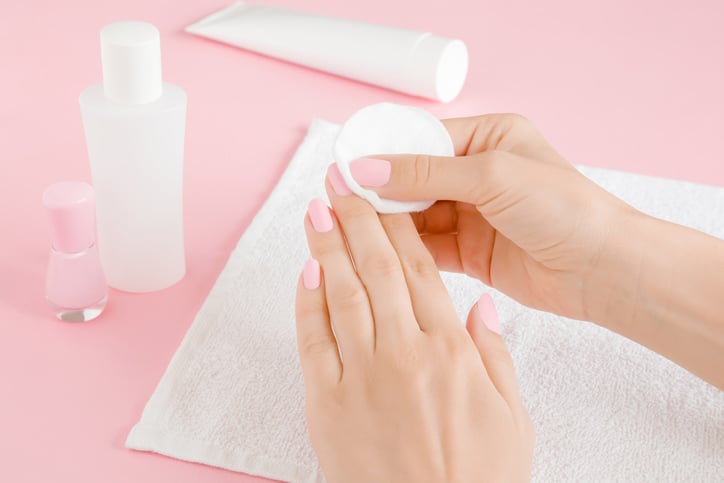
Acetone is a common industrial solvent (it is able to dissolve other substances) that is a colourless and flammable liquid at room temperature. It occurs naturally in; plants, trees and volcanic gases but is also manufactured artificially.
When mixed with air in its gas form, acetone can pose a fire and explosion hazard.
It is a strong chemical that is also capable of dissolving; plastics, jewellry, pens and pencils and rayon fabric on contact.
Acetone is also produced by the human body, with amounts normally present in the blood and urine. People with diabetes have been found to produce larger amounts of it.

Acetone is used as a solvent for; fats, oils, waxes, rubbers and plastics as well as being an ingredient in the production of; paints, household cleaners, rayon fabric, film for cameras, plastics, fibres, sun tan lotion, other chemicals and drugs.
Its most common use around the home might probably be its feature as nail polish remover – it very effectively dissolves and removes the paint you no longer want on your nails.
You can be exposed to acetone through inhalation, ingestion or skin and eye contact.
Inhalation and ingestion acetone will enter your bloodstream where it is carried to all of your body’s organs. If it is a small amount of acetone, your liver will break it down into chemicals that are not harmful and in turn, energy is produced for normal bodily functioning.
Inhaling a moderate to high amount of acetone can cause:
Ingestion of high levels of acetone can result in damage to the skin in your mouth as well as unconsciousness.
Although skin contact is inevitable with the use of products such as nail polish remover, irritation and damage to the skin is still a possibility. It is wise to limit the amount of time the chemical is exposed to the skin if possible.
If acetone has been inhaled by a person, remove them from the contaminated area to the nearest fresh air source and monitor their breathing. If they find breathing difficult, loosen tight collars and belts and give them oxygen. If they are not breathing, perform CPR (if you are qualified to do so).
If acetone is swallowed, seek medical attention immediately and do not induce vomiting unless a medical professional has advised to do so.
In the event of acetone exposure to skin; remove all contaminated clothing, footwear and accessories and cleanse the affected area with plenty of water. Contaminated clothing must be washed before wearing again. Apply the affected area with a lotion to soothe the irritation.
If eye exposure occurs, remove any contact lenses and flush the eye with running water for at least 15 minutes, remembering to wash under the eyelids.

Acetone is flammable and is capable of self-igniting when temperatures reach 465°. For this reason, it is important to keep acetone away from other chemicals in a segregated area, especially for flammables.
Adequate ventilation should be available when using acetone and local exhaust ventilation should be installed if necessary.
Safety showers and emergency eyewash fountains should be accessible in the immediate area of the potential exposure to the chemical.
The recommended PPE for handling acetone includes:
Chemwatch has the largest collection of SDS in the world. For a FREE copy of the Chemwatch-authored SDS for Acetone, click the button below.